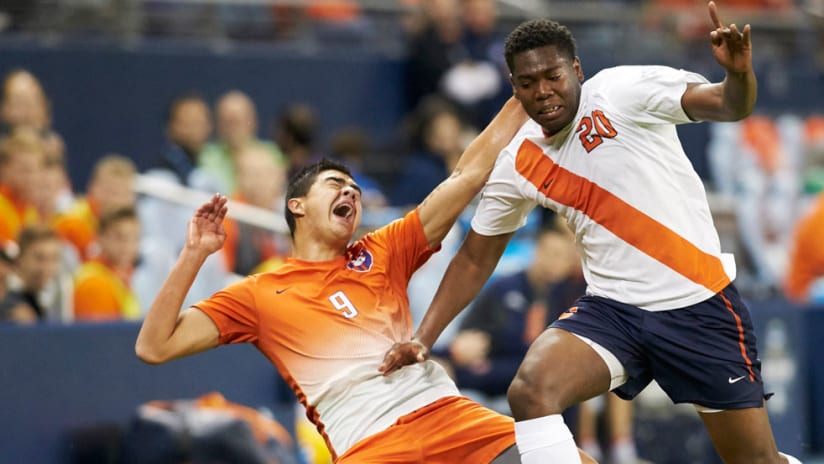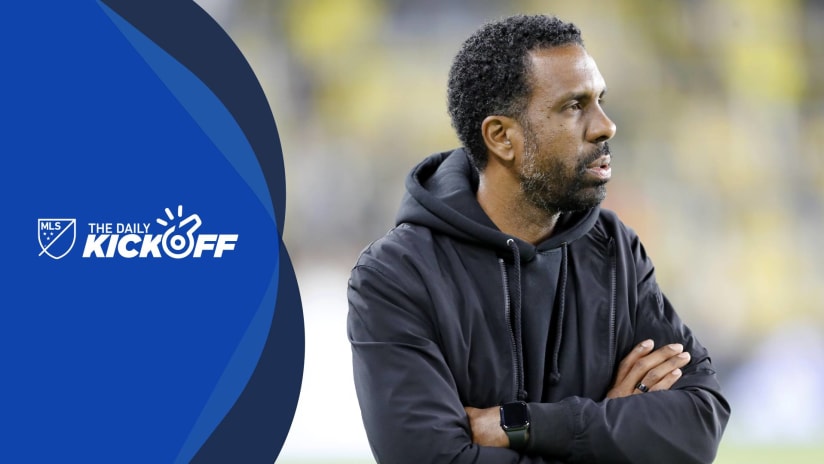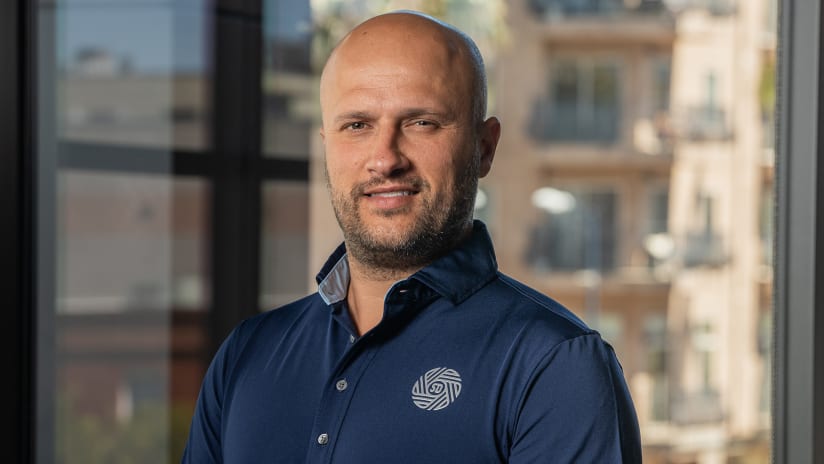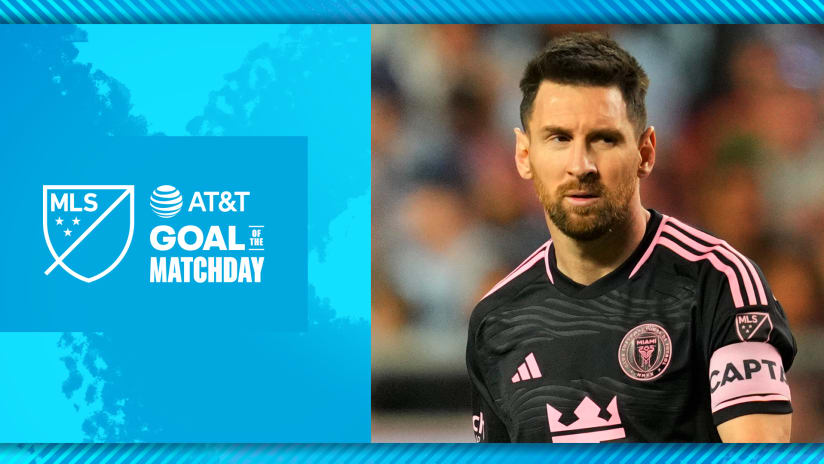At first blush, the College Cup final between Stanford and Clemson on December 13 was a surface-level mauling. Behind two goals from Jordan Morris, the Cardinal jumped on the Tigers in the second minute and won the program’s first national title with a 4-0 win in Kansas City.
But there were layers beneath the final score that struck at the question dividing two competing ideologies in the fight for the soul of college soccer:
What, exactly, is the role of the international player in the modern college game?
It’s an expansive question without an easily discernible answer, but the Cup final provided a prism through which to view its evolution. On one side, Clemson’s roster was a 30-man United Nations: The Tigers boasted players hailing from nine different countries on three separate continents. At one point in the first half, the ball traveled from Andrew Tarbell to Patrick Bunk-Andersen to Paul Clowes to Thales Moreno to Diego Campos: an American to a Dane to a Brit to a Brazilian to a Costa Rican.
Stanford’s approach stood in stark contrast: The Cardinal not only didn’t field a single foreign player in their starting XI, but there wasn’t one on the entire roster. A lineup entirely comprised of Americans won the Pac-12 and then barnstormed through the NCAA tournament. Morris, Stanford’s best player, was a poster boy for the future of the US national team.
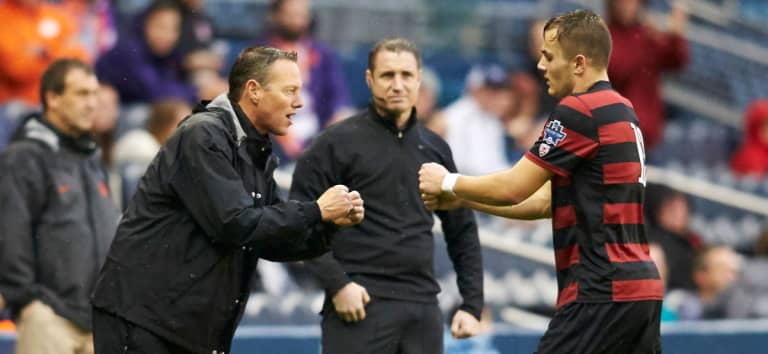
Taking too much from that is problematic, but it’s an important point to make all the same. Leagues the world over go through feverish bouts of handwringing as they seek balance between raising the overall standard with global talent while still managing to develop homegrown stars. Does inundating your roster with outside talent take away opportunities from players in your backyard or challenge them to raise their game? Or perhaps a bit of both?
College soccer is an international game, and at least this year it was blindingly obvious to Stanford coach Jeremy Gunn – a native of England – that the American standard of play in the college ranks is rising right alongside the influx of foreign players, thanks in large part to a generation of coaches and parents who grew up with the game and help prepare the next generation of talent before they ever get to a college campus.
"I think it was easier for foreign players to make a bit more of an impact longer ago, just because now the standard has risen so high in the United States,” said Gunn, who won a national title with Stanford in just his fourth season, to MLSsoccer.com. “Just having a foreign accent doesn't automatically make you an expert in the field. Twenty years ago, if you came from another country, there was a chance you might've played a bit more soccer than the next person [in the US]. That's not the case today at all."
“The biggest change is happening now because when a 3-year-old goes into the back yard, his mom and his dad will kick a ball at them the right way,” he added, “which means from a young age – ages 3 to 10 – the soccer player in the US will get a thousand times better than they did 20 years ago. You didn’t have that environment before.”
- SuperDraft: What to expect from your team's selection
There is no singular consensus as to whether the presence of international players in college soccer has risen over the past decade. College requirements haven’t changed in that span, and Europeans or South Americans or Africans looking for a pipeline into the pro ranks have always been able to find a more direct path than college soccer. That certainly hasn’t changed either.
But there is little question among coaches that, by and large, a higher quality of international player is upping the quality of the college game, which fills a niche in American soccer no other avenue can. And much of that is down to the availability of higher levels of scouting.
While most MLS clubs trawl the transfer market and focus on developing their academies, the vast majority of well-placed college coaches in major conferences have a network of international scouts and tipsters upon whom they can call for nudges on young under-the-radar players. The rise of overseas identification camps has also made it increasingly easier for programs to dive into soccer-rich economies and dig out a hitherto unknown star of the future. More and more, college soccer has turned into a second-chance saloon.
- SuperDraft: The top late-round steals in MLS history
The latter case is how Akron found Steve Zakuani. And the former is how Creighton coach Elmar Bolowich came across Fabian Herbers.
Today, Herbers is a Generation adidas target, a Hermann Trophy finalist and is coming off the single most productive season for any player in the country. The junior finished the 2015 season as the country’s only player in the top 10 in both goals (15, T-3rd) and assists (17, 1st). But when he arrived at Creighton in 2013, Herbers was a precocious 18-year-old who’d been plucked from the wilderness of the German fifth division.
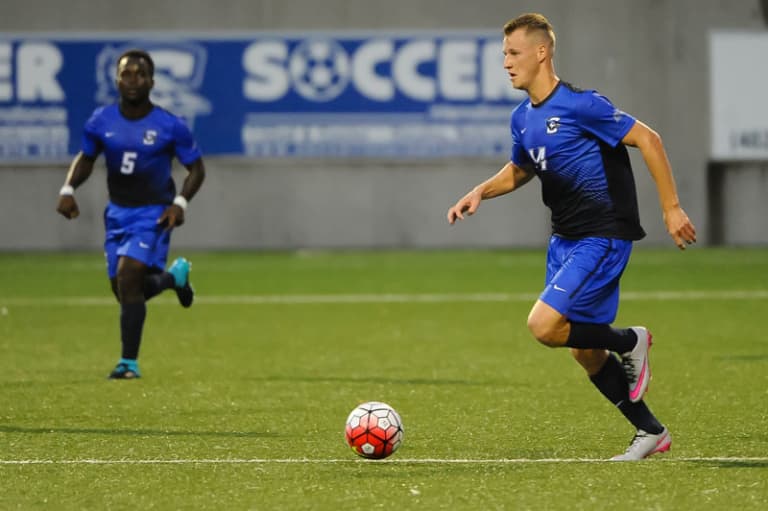
Herbers is emblematic of the highest tiers of the foreign experience in college soccer. He arrived in the US without a clear professional future in Germany and turned his anonymity into a ladder to the professional ranks. And for Herbers, the presence of internationals in college soccer has helped round out both parties.
“International players might bring different aspects into the game that American players haven't experienced, and vice versa,” Herbers said. “For example, European players might have more knowledge about the tactical aspect of the game whereas American players might have more experience with the physical aspect of the game. Therefore players can learn from each other. Eventually, the individual players will get better, and the team will get better as well. I do think that international players have made college soccer better overall.”
The learning process continues apace in the college game, which is always on the lookout for the next bright, undiscovered star. Whether that’s here or abroad, the consensus is that the two are sharpening each other – to the benefit of both the amateur and professional game in North America.
That's a consensus Gunn agrees with. He doesn't see more international players now than he did 5 or 10 years ago, simply a more competitive environment in which better, more robustly scouted internationals raise the level of play for American players.
And that's good for everyone.
“With universities being able to recruit from a much greater player pool across the entire world, it means some of the top American prospects will still go to top colleges,” Gunn said. “But because of the influx of talented athletes from other countries, it really spreads out the strength and depth across the whole of men’s soccer.”

